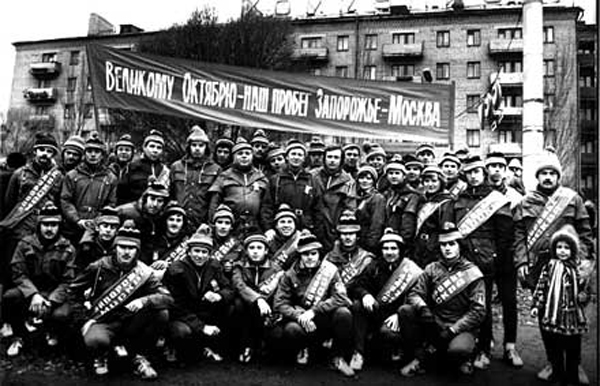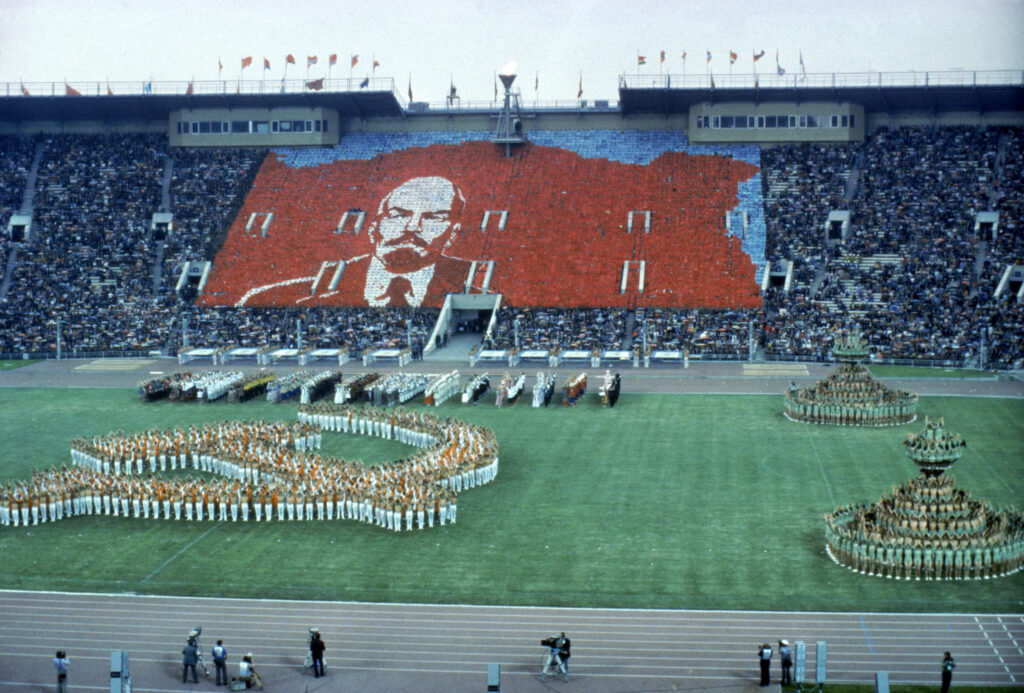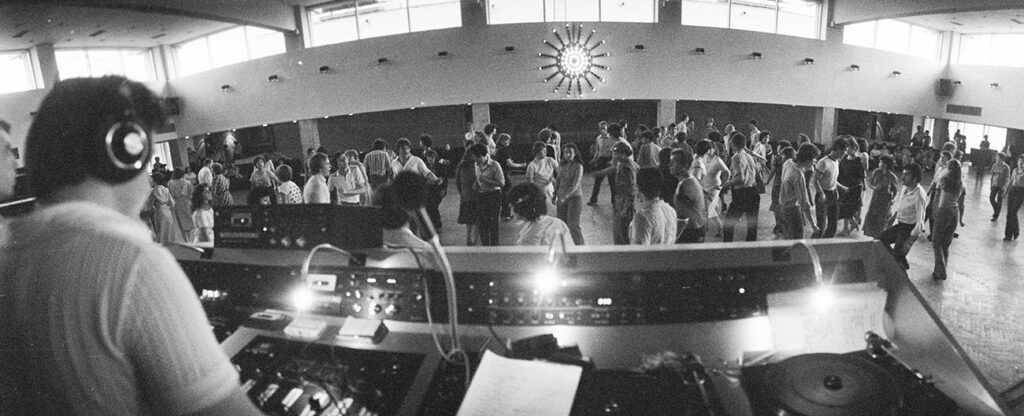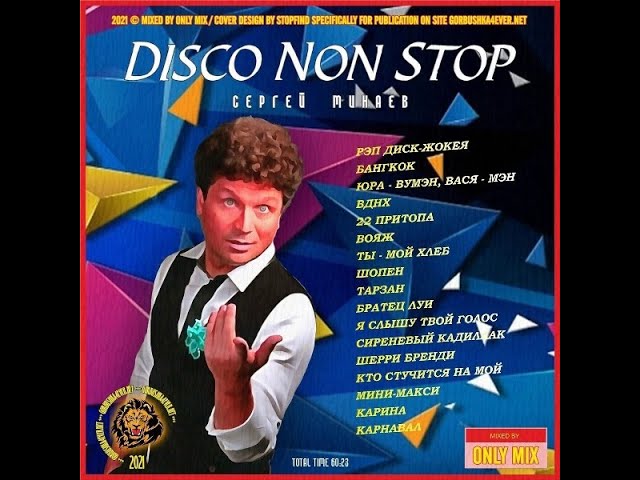In the dreary years between the late ’70s to mid-80s, young party members of the Communist Party, however removed from the classical Marxist tradition, found freedom in the necessity of mobilizing party cadre. They chose disco which evoked a different sense of America – not Reaganomics or the atomic bomb – but dancing, good times and losing oneself in the groove of syncopation. It allowed Soviet youth to build their own America, a place of beats and melody, bass and space.

Soviet disco, beyond its officially recognized and promoted role – often in and around the promotion of physical activity – has a deeper genealogy in the pre-Stalin glory of early Soviet cultural production. I shall get back to this at the end of the piece, but for now, let us see how disco managed to take its place in the country.
In a typical Soviet organization, staff meetings were mandatory at least once a month. Such meetings were full of ideological speeches by local leaders of the Communist Party. Events of this kind were arranged in culture clubs or at auditoriums, where hundreds of people could be seated. To attract more people, local Communist Party operatives and their younger followers from the Komsomol (Communist Youth Organization) tried to put some kind of entertainment at the end of all these stiff and boring events — and the discotheque was the perfect solution.

Disco ended up being an entertainment tool controlled by the Communist Party’s culture department and its management was put in the hands of Komsomol. The most desirable and fancy discos opened in the bars of the Intourist hotel chain, which had good equipment & a posh environment. Only Soviet and Komsomol nomenclature could get in to mingle among foreign tourists, local hookers and an army of KGB undercover agents (average citizens had no access).
Professional DJs first started appearing in these upscale places. Since a Western-style entertainment industry was absent in the Soviet Union, Soviet DJs were trained in an anti-capitalist style. Every event required official titles explaining the reason why people were dancing there. It should reflect the latest guidelines from the Central Committee of the Communist Party, or the speech by General Secretary Brezhnev, or some kind of a slogan about benefitting Soviet people’s health. DJs needed to be very creative to obtain an official approval for their music sets. Since music was a part of Soviet ideology, there were censors who decided which music could be performed and which could not be allowed.

The Summer Olympic Games in 1980 were a major boost for discotheques in Moscow. New sporting arenas and hotels were built with entertainment and recreational facilities. When the Olympics were over and thousands of foreign tourists left Moscow, new state-of-art discotheques became very desirable places for the Soviet youth.

Even though discotheques were controlled by Komsomol, a certain kind of freedom was allowed and even underground bands got to play, much to the enjoyment of the trendy crowd, full of students. If some kind of trend starts in Moscow, it will spread all over the country in a few years, so it happened with discos too. Various discotheques opened in student dormitories, workers’ culture clubs, street cafes and restaurants. In these places, censorship was nominal and people were able to play any type of music they wanted.

Some Soviet DJs, such as Sergei Minayev, tried to imitate popular Western disco tunes by creating Russian versions of it accompanied by stage performances. The Soviets very much enjoyed Italian pop singers such as Celentano, Al Bano, Romina Power and the “Estrada” music style based on hits from Soviet pop stars. As a result, a typical Soviet disco night included music from the U.S., England, Germany, Italy, France, Sweden and USSR.

The idea that a cultural producer would take the responsibility not merely to make bodies move on the dance floor, but to further the great legacy of non-capitalist, dialectically elegant art of the early Soviet avant-garde may seem distant, and contradictory to our understanding of the late Soviet Union as a highly repressive society. But an expression of the possibility of other worlds in Soviet disco was intrinsic to the role it played, both in the history of dance music, but also in the history of Soviet culture. It retains its charm not merely by being kitsch, but is every bit a legacy of Soviet culture as are the films of Tarkovsky. And unlike the ‘high art’ of Tarkovsky, one can indeed imagine Soviet people from all walks of life, including even the KGB agents, letting their regimented bodies go loose and wild on the dance floor. As DJs continue to dig in the crates for new textures for their sonic tapestries, let’s hope for a deeper revival of Soviet disco music.





